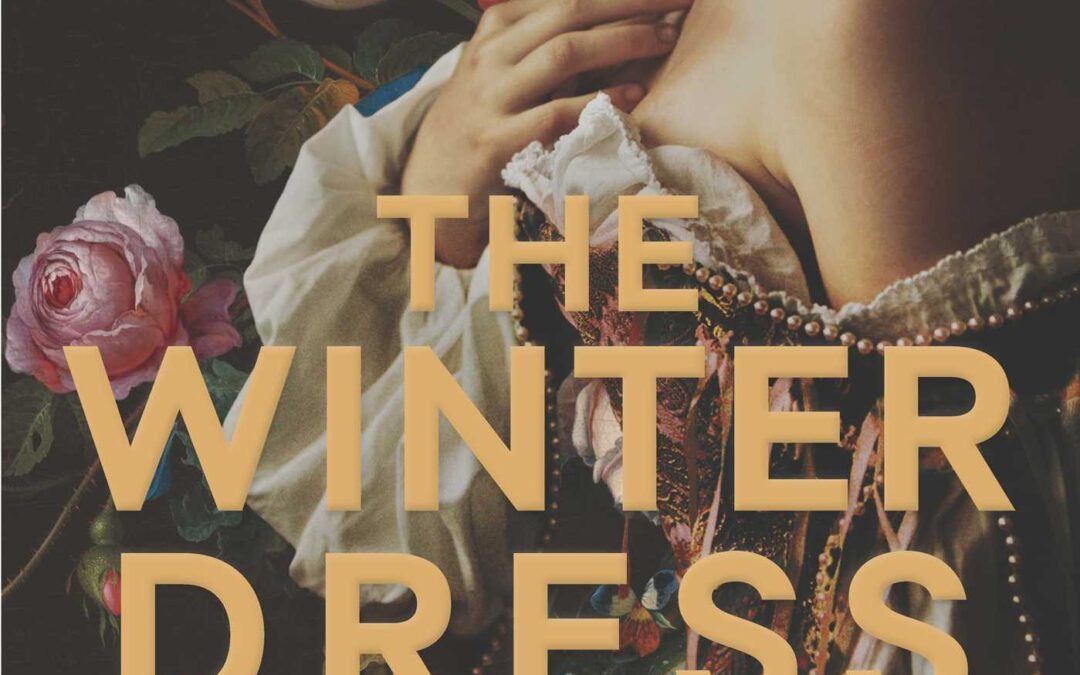Not only did I receive an advance copy of this beautiful book The Winter Dress (Simon and Schuster 2022) by historical author Lauren Chater, but mine was one of only 100 special copies encased in a gorgeous heavy card book jacket that has the look and feel of an ancient treasure chest, complete with rusted hinges, barnacles and a starfish. What a fabulous way to introduce a truly intriguing novel.
Lauren Chater is known for her attention to historical detail. She conducts extensive research into the facts that her stories are based upon, and the fictional elements that she creates to thread those facts into a believable and consuming tale. The Winter Dress is inspired by a real 17th century gown found off the Dutch coast in 2014. Chater has taken the contemporary finding of this dress – rescued from the depths of a centuries’ old wreck, but remarkably intact – and alternated the present-day research and inquiries into its provenance with her beautifully imagined story of the life of the dress in around 1651. This is one of the most compelling aspects of this story: the very few facts which researchers or historians are presented with when a find of this kind occurs, and the way in which they must search documents, historical records, official notes, diaries, anecdotal evidence, material and items in collections in other museums or academic institutions – all to put together the puzzle of the origin of the item in question, in this case a silk gown, the owner or owners it might have had, the women who might have worn it and their circumstances, why it ended up at the bottom of a sea-wrecked vessel, why it has not been discovered until now, and how it has remained preserved. Then follow the questions of ownership – who owns these centuries’ old treasures? The divers that find them? The country off the coast where they are found? The origin country of the ship? So many questions. So few answers, so fiercely pursued and defended.
The contemporary section of The Winter Dress features Jo, a lecturer and historian struggling to finish an accessible creative non-fiction book from the scaffolding of her dissertation in cultural dress theory. Now living in Sydney, Jo has a complicated family history connected to the small island of Texel off the Dutch coast. When an old friend Bram contacts her to ask her advice about a find he and some friends have made while diving an ancient wreck, Jo seizes the opportunity to use the artefacts to in some way mesh with her manuscript. She is most interested in a silk gown, remarkably preserved. The connection, her history – it all seems to be serendipitously fortunate. But who she choses to work with and their ulterior motives might diverge radically from what she expects.
The historical section is written with precise and exacting detail. Textile historians and fabric/fashion experts will appreciate the ferocity and dogged determination with which Chater (and her character Jo) pursue the provenance of this dress, but it is in the historical chapters where that history really comes to life. It is the story of Anna, a woman who has also suffered a difficult upbringing and finds herself in straightened circumstances, such that she takes a position as a companion to a famous artist, Catharina. The relationships between the two women, the artist’s previous companion (mysteriously disappeared) and the artist’s brother are intense and explored with sensitivity and insight.
Chater has a skill in being able to move seamlessly back and forth between 17th century Europe and present-day Australia, weaving together the lives of these women through the tenuous and uncertain history of the found dress. A valuable possession both then and now, the chronicle of its journey uncovers so many secrets and hidden historical gems of information. I found the last quarter of the novel particularly riveting, with so many threads coming together to form a pattern I hadn’t foreseen.
Chater writes in lyrical and luscious prose and makes the most of her descriptive talents, breathing life and interest into what must have been months or years of diligent research. Using her creative abilities, she has interspersed a fictional story with the seeds of truth – the truth of an amazing discovery less than 10 years ago – and has imagined a tale worthy of those who yearn for historical detail and those who merely love a good story. Under her skilled hands, readers realise that the past and the present are not so distant from each other; that women then and women now share similar hopes, desires, dreams, fears and ambitions.

